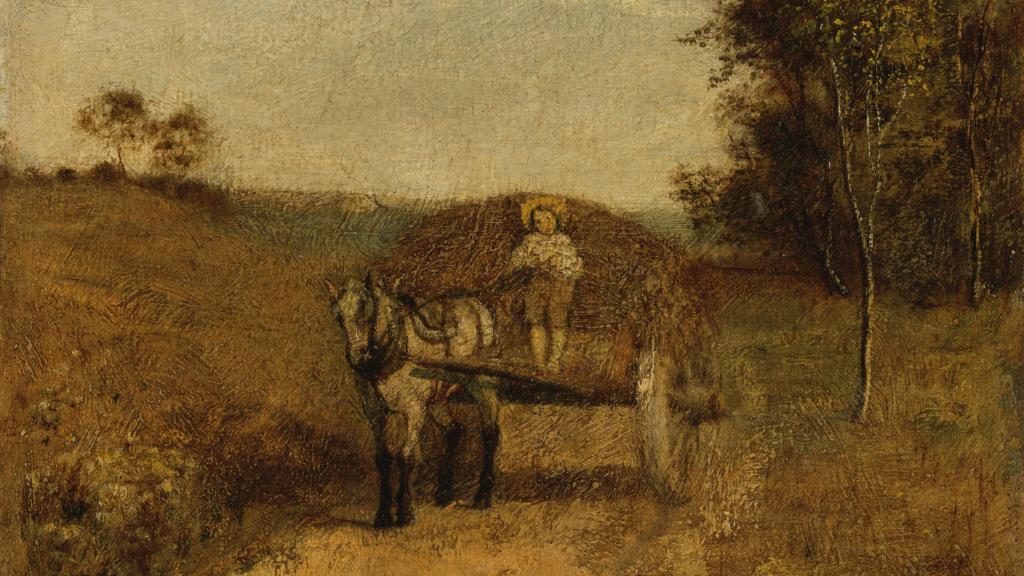Albert Pinkham Ryder
American
The eccentric artist Albert Pinkham Ryder stylistically bridged the 19th and 20th centuries. He moved from Massachusetts to New York City in 1870, where he mainly painted seascapes and other images with mystical associations. His paintings do not present nature or real-life experiences. Instead, they show his inner visions and psychological turmoil. Ryder was admired by the first generation of American modernists, who welcomed him into the 1913 Armory Show as a likeminded artist.
Born
1847
Died
1917

What is the psychological impact of this work?
The luminous haze of this bright, rural scene characterizes Ryder’s work and may reflect the influence of the American Transcendentalist movement, which emphasized poetic feelings over ordinary experiences. Through painstaking technique, Ryder created enamel-like surfaces and intense colors in his works, whose rich textures and abstract qualities made him a hero to early American modernists.
Medium
Oil on canvas
Credit
Memorial gift from Dr. T. Edward and Tullah Hanley, Bradford, Pennsylvania
Item ID
69.30.183
Dimensions
11 x 14 3/4 in. (27.9 x 37.5 cm)
Date
ca. 1875
Country
Artist name
Albert Pinkham Ryder
Artwork location





